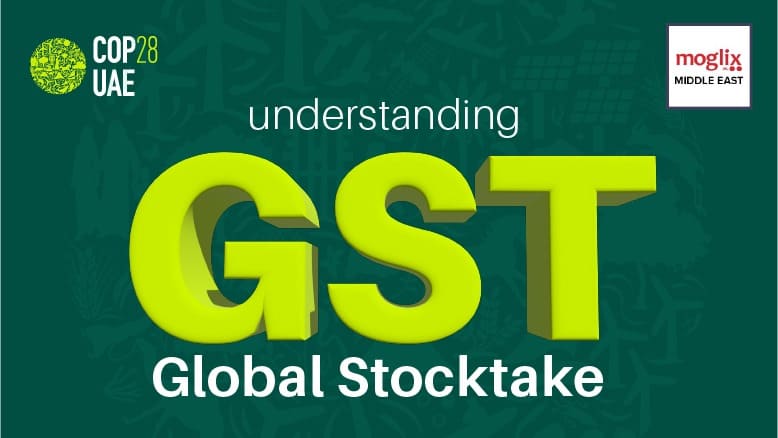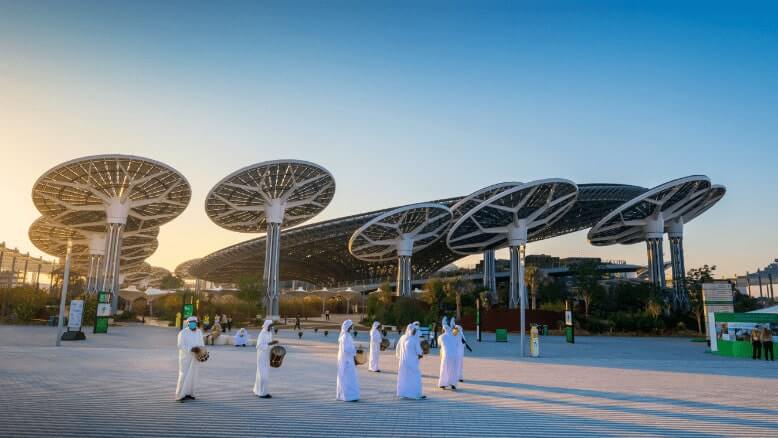Alarm Bells Ringing at COP28: Global Stocktake in focus

Alarm Bells Ringing at COP28: Global Stocktake in focus
As COP28 approaches, the first-ever global stocktake casts a stark light on our collective climate progress. While the Paris Agreement goals remain, the reality paints a sobering picture: we’re off track. The 1.5°C target hangs precariously, and the window for meaningful change is rapidly narrowing. This critical juncture demands immediate action.
COP28 presents a pivotal opportunity. The global stocktake serves as a mirror reflecting both our achievements and shortcomings, guiding us towards more ambitious climate action plans. Governments will make a crucial decision at COP28, one that can set the course for our collective future. This decision holds the potential to accelerate ambition, unlock resources, and propel us towards a sustainable tomorrow.
Yet, the path forward demands more than mere words. We must collectively rise to the challenge, leveraging the global stocktake as a springboard for urgent action. Join us as we delve deeper into the implications of the global stocktake, exploring the challenges that lie ahead and the opportunities we must seize. Together, let us amplify the call for action and build a world where climate ambition translates into tangible results.
What is Global Stocktake?
Imagine taking a comprehensive inventory of your home, examining each item and its purpose. This is precisely what the global stocktake does for climate action. It’s a meticulous process of assessing our collective progress, identifying areas where we’re falling short, and collaboratively charting a course for a more sustainable future.
Occurring every five years, the global stocktake will culminate at COP28, offering a critical opportunity to inform the next round of climate action plans known as NDCs. By holding up a mirror to our collective efforts and highlighting areas needing improvement, the stocktake empowers policymakers and stakeholders to strengthen their commitments and pave the way for accelerated action.
Think of it as a strategic pause to assess our journey towards the Paris Agreement goals. It’s a chance to identify gaps, learn from successes and failures, and ultimately, chart a more ambitious course forward. By embracing the insights gained from this global inventory, we can collectively translate good intentions into concrete action, propelling us towards a more sustainable and resilient future.
The Scope of the Global Stocktake
The global stocktake goes beyond a mere assessment of progress. It delves into the very core of our collective climate action, scrutinizing three key areas:
- Mitigation: This pillar focuses on evaluating how successfully we’re reducing greenhouse gas emissions. It analyzes our progress towards the ambitious targets of keeping global warming below 2°C and ideally 1.5°C, while identifying potential for even deeper emission cuts.
- Adaptation: Here, the stocktake assesses how countries are strengthening their resilience and reducing vulnerabilities to climate impacts. It examines their ability to adapt to the changing climate and minimize potential damage.
- Means of Implementation: This area scrutinizes the financial, technological, and capacity-building support provided to developing nations. It evaluates the alignment of financial flows with emissions reduction and climate-resilient development goals, ensuring that these nations receive the resources they need to tackle the climate crisis effectively.
Furthermore, the global stocktake extends its reach to address:
- Loss and Damage: This examines the actions and support needed to respond to climate impacts exceeding a community or ecosystem’s ability to adapt. It recognizes the devastating consequences of climate change and seeks solutions to address them.
- Response Measures: This acknowledges the potential unintended social and economic consequences of climate action. It seeks to minimize these impacts and ensure that climate action is implemented in a just and equitable manner.
- Science and Equity: The stocktake emphasizes the importance of relying on the best available science to inform climate strategies. It also underscores the critical need for promoting equity and ensuring that all stakeholders are involved and benefit from the transition to a sustainable future.
In essence, the global stocktake acts as a comprehensive audit of our climate action efforts, leaving no stone unturned in its quest for a more sustainable tomorrow. By rigorously examining every aspect of our progress, we can identify areas for improvement, strengthen our commitments, and pave the way for a future where climate action is the norm, not the exception.
A Stark Wake-Up Call
While the Paris Agreement has undoubtedly spurred global climate action, the sobering reality revealed by the global stocktake is that implementation falls short across all areas. The ambitious 1.5°C target remains elusive, and current emissions trends paint a bleak picture. Despite pockets of progress, adaptation efforts are insufficient to meet the growing challenges of climate change.
The stocktake emphasizes the need for a radical shift – a systems transformation. This entails a whole-society, whole-economy approach that seamlessly integrates climate resilience and development with low greenhouse gas emission strategies. Such sustained efforts over decades are crucial to achieving sustainable development and eradicating poverty, ensuring a future where both environmental and human needs are met.
However, a stark disparity exists between the needs of developing nations and the support provided. The stocktake calls for unlocking and redirecting trillions of dollars towards climate action and climate-resilient development in these countries. Only by closing this financial gap can we ensure a just and equitable transition to a sustainable future for all.
The global stocktake is not merely an assessment; it’s a clarion call for action. It serves as a roadmap for closing the implementation gap, reminding us of the urgency and the magnitude of the task ahead. By embracing the insights it offers, we can collectively chart a more ambitious course, transforming our climate action efforts into tangible results that safeguard the planet for generations to come.
Findings hint towards a Call for Urgent Action
The initial findings of the Global Stocktake paint a clear picture: we are not doing enough. Despite some progress, the current trajectory of climate action falls short on all fronts, jeopardizing the long-term goals of the Paris Agreement.
Key findings across the three main goals are alarming:
Mitigation:
- Emissions Gap: Current national plans leave a massive gap of 20-24 billion tons of CO2 equivalent between projected emissions and what’s needed for a 1.5°C pathway.
- Ambition Needed: Updated NDCs must be significantly more ambitious, including phasing out fossil fuels and halting deforestation.
- Cost-Effective Solutions: Green industrialization and other strategies offer opportunities to cut emissions while promoting development.
- Just Transition: Shifting away from fossil fuels requires careful planning to minimize disruptions to jobs and communities.
Adaptation:
- Closing Window: The window to adapt to climate impacts is rapidly closing, demanding urgent action.
- Fragmented Efforts: While ambition is increasing, adaptation actions are often disconnected, incremental, and unequally distributed.
- Local Context Matters: Adaptations must be driven by local needs and populations, including marginalized groups.
- Scaling Up Finance: Rapidly increasing finance for adaptation and addressing loss and damage is crucial.
Implementation and Finance:
- Finance Shortfalls: Despite progress, developed countries are not providing enough financial support to developing countries.
- Global Financial Transformation: The global financial system needs to be redesigned to support climate action.
- Simplified Access: Developing countries need easier access to international climate funds.
- Technology Transfer: Accelerating technology transfer is vital for implementing climate solutions.
Implications for the Future:
The Global Stocktake findings demand a strong political response from countries. This includes:
- Updated NDCs: Countries must significantly increase the ambition of their national climate action plans by 2025.
- Biennial Transparency Reports: These reports will track progress towards agreed goals.
- Ratcheting Up Mechanism: The Global Stocktake is a key element in the process of continuously strengthening climate action to meet the Paris Agreement goals.
The Global Stocktake serves as a wake-up call. It is time to move beyond incremental change and embrace a transformative approach to climate action. We must act collectively and urgently to secure a sustainable future for all.Next Steps after the Global Stocktake
The Solar Renaissance in the UAE: Illuminating Tomorrow

The Solar Renaissance in the UAE: Illuminating Tomorrow
In the arid expanse of the Arabian desert, where temperatures soar and sunlight prevails, the UAE, synonymous with towering skyscrapers and a flourishing oil economy, is pioneering a transformative solar revolution to embrace a greener future. Let’s delve into the radiant world of the UAE, embracing solar energy as a beacon for sustainable progress.
The Current Solar Endeavors in the UAE
The UAE’s expanding solar portfolio underscores its steadfast commitment to solar power. Notably, Dubai’s Mohammed bin Rashid Al Maktoum Solar Park, positioned as the world’s largest single-site solar park, is set to generate 5,000 megawatts by 2030 across 40 sq. km.
Smaller yet significant projects, including the 1,177-megawatt Noor Abu Dhabi Solar Plant, mirror the nation’s dedication to energy diversification and reducing reliance on fossil fuels. As of September 2021, solar power constitutes 9% of the UAE’s total energy consumption, a figure expected to ascend with the nation’s unwavering commitment to solar energy.
Motivation Behind the UAE’s Solar Transition
The UAE’s pursuit of solar energy extends beyond economic diversification. Driven by environmental consciousness, the nation aims to mitigate the ecological repercussions of fossil fuel dependency. By embracing solar electricity, the UAE not only secures its energy future but also positions itself as a global environmental advocate actively combating climate change.
The UAE’s solar initiative yields unique advantages beyond clean energy generation. It stabilizes the energy supply, mitigating the country’s vulnerability to oil price fluctuations. Moreover, the shift towards green energy fosters economic growth and technological innovation, establishing the UAE as a pioneering force in renewable energy. This, in turn, attracts investments and enhances the nation’s global image.
Government-Led Initiatives Fueling the Solar Momentum
The UAE government spearheads the solar revolution, offering incentives like feed-in tariffs and power purchase agreements to entice private-sector participation in renewable energy projects. Noteworthy is the UAE Council for Climate Change and Environment, showcasing the nation’s commitment to sustainability.
The UAE’s solar future shines brightly, with explorations into concentrated solar power and energy storage technologies to enhance efficiency and reliability. Collaborations with international partners and experts will likely play a pivotal role in realizing these sustainable development goals.
The robust environmental connection between India and the UAE sees Indian enterprises actively engaging in solar projects. This collaboration, driven by shared concerns about energy needs, serves as a model for sustainable development.
COP28: A Pinnacle in the UAE’s Climate Endeavors
As the UAE strides towards Net Zero emissions, its hosting of COP28 in Dubai from November 30 to December 12, 2023, aligns seamlessly with its solar power commitment. The global platform will showcase the UAE’s achievements in SDGs and advocate for collective action on climate change.
The UAE’s solar revolution marks a monumental stride towards a sustainable and eco-friendly future. Beyond the realm of solar technology, industries such as B2B trade are embracing solar power to foster growth. Pioneering this transition is Moglix, a key player in providing supply chain and digital procurement solutions. Explore the transformative impact of technology on efficiency, cost reduction, and global industry growth with Moglix.
COP 28: The Middle East’s Adaptive Reuse Phenomenon is Revolutionizing Sustainability

COP 28: The Middle East’s Adaptive Reuse Phenomenon is Revolutionizing Sustainability
The grandeur of the Middle East often overshadows the pressing need for sustainable practices in the region. As the world marches towards a greener future, the Middle East is now awakening to the potential of adaptive reuse, a trend that has been transforming underused buildings and sites worldwide. This concept is redefining the landscape of the Middle East and heralds a sustainable revolution in architecture and urban planning.
Adaptive Reuse: A Global Trend
Adaptive reuse, the process of reimagining older structures, is gaining momentum globally. It involves transforming underused buildings into more practical and functional spaces, ensuring that the architectural heritage is preserved while addressing modern urban needs. Cities like New York and London have been at the forefront of this trend, redefining their landscapes and preserving history simultaneously. New York’s One Wall Street, once an office building, has now found new life as a residential haven, and London’s No.1 Grosvenor Square is now a super-prime residential complex. Battersea Power Station, a decommissioned landmark, is currently undergoing transformation into a mixed-use development. These global success stories have set the stage for adaptive reuse to become a game-changing phenomenon.
Middle East is Adapting
In the Middle East, adaptive reuse is not a new concept. The UAE government has showcased the benefits of re-purposing old structures, with projects like the Bastakiya neighborhood and Al Serkal Avenue. The Bastakiya neighborhood now boasts cafes, art galleries, and boutique hotels, preserving its historical significance while fostering culture and community. Al Serkal Avenue, once an industrial zone, has become a hub for arts and culture, contributing to a vibrant arts community.
Expo City Dubai exemplifies the potential of adaptive reuse. The site, originally developed for World Expo 2020, has been entirely reimagined into a self-sustaining, 15-minute city. It prioritizes eco-friendliness, with green roofs and smart energy-saving appliances, setting a new standard for sustainable living. This transformation not only pays homage to the area’s past but also presents a promising future for the region
The Middle East is embracing sustainability as a core value. Re-purposing existing structures instead of constructing new ones significantly reduces carbon emissions, aligning with the United Nations Environment Program’s call to address the construction sector’s high carbon footprint. With the UAE’s construction market soaring, the need for sustainable solutions is evident.
‘Year of Sustainability
The UAE declared this year the ‘Year of Sustainability,’ aligning with COP28, emphasizing the importance of sustainable living. This move is expected to encourage regional developers to prioritize sustainability in their projects. As more people choose the Middle East as their home, the demand for housing and entertainment destinations will rise. Adaptive reuse projects offer an efficient and sustainable option to meet these needs. Buyers are increasingly drawn to high-quality adaptive reuse projects, and this trend is likely to continue. It’s an exciting era for sustainable development in the region.
Moglix in the UAE is working with real estate and construction companies to ensure their sustainability goals are aligned with their procurement goals. Moglix is the most comprehensive procurement solution in the UAE, that combines E catalog based buying experience, digital procurement and supply chain solution with a physical warehouse and logistics network, allowing you a complete and most comprehensive E2E procurement and supply chain solution. Reach Us

